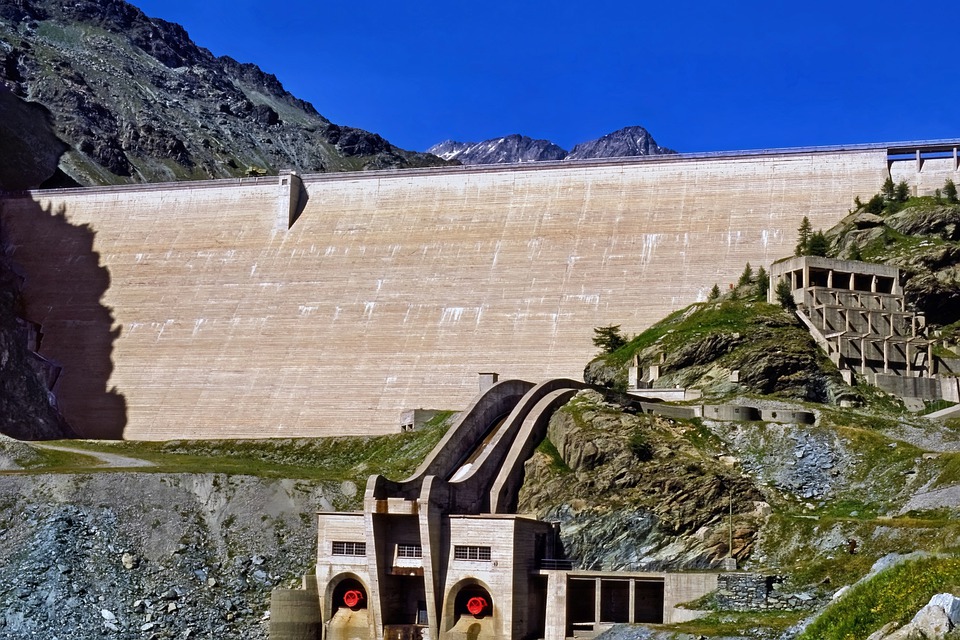[ad_1]
Exploring the Untapped Potential of Geothermal Energy Worldwide
Geothermal energy is a renewable and sustainable source of power that is generated by harnessing heat from the Earth’s sub-surface. It is a clean and reliable source of energy that has the potential to play a significant role in meeting the world’s growing energy demands while reducing greenhouse gas emissions. Despite its many benefits, geothermal energy remains an underutilized resource globally. In this article, we will explore the untapped potential of geothermal energy worldwide and the opportunities and challenges associated with its widespread adoption.
The Untapped Potential of Geothermal Energy
Geothermal energy is abundant and widely distributed around the world. It is estimated that the Earth’s heat content is equal to 200 million times the energy content of all oil and gas resources in the world. This vast energy source can be harnessed in various ways, including through the use of heat pumps, geothermal power plants, and direct use applications such as heating and cooling systems, and hot water supply for industrial processes.
Geothermal power plants generate electricity by tapping into the Earth’s natural heat through the use of hot water and steam. These power plants can be categorized as either dry steam, flash steam, or binary cycle plants, depending on the type of resource they utilize. According to the International Renewable Energy Agency (IRENA), geothermal power capacity worldwide was around 14.9 gigawatts (GW) at the end of 2020, with the potential for significant growth in the coming years.
In addition to electricity generation, geothermal energy can also be directly used for heating and cooling applications. Geothermal heat pumps are an efficient and cost-effective way to heat and cool buildings by utilizing the constant temperature of the Earth below the surface. Direct use of geothermal energy is already prevalent in many countries, particularly in regions with suitable geological conditions.
Opportunities and Challenges
The untapped potential of geothermal energy presents several opportunities for sustainable energy development and economic growth. Geothermal energy is reliable and available 24/7, making it a valuable source of baseload power that can provide a stable and constant energy supply. This reliability is particularly important for countries seeking to reduce their dependence on fossil fuels and mitigate the impacts of climate change.
Furthermore, the development of geothermal energy can create job opportunities and drive local economic development in regions with suitable resources. The construction and operation of geothermal power plants, as well as the installation of geothermal heating and cooling systems, can provide employment and stimulate economic growth in rural and remote areas.
Despite these opportunities, there are several challenges that must be addressed to unlock the full potential of geothermal energy worldwide. One of the main challenges is the high upfront costs associated with geothermal exploration and development. The exploration phase requires significant investment in drilling and testing to assess the resource potential, which can be a barrier for many countries and investors.
Another challenge is the technical and geological complexity of geothermal resource development. While some regions have high-temperature resources located close to the Earth’s surface, others may require deeper drilling and more advanced technologies to access the heat. Additionally, the presence of fluids with high mineral content and potential environmental impacts must be carefully managed to ensure the sustainability of geothermal projects.
Policy and regulatory frameworks also play a crucial role in enabling the expansion of geothermal energy. Governments can support geothermal development through financial incentives, feed-in tariffs, and streamlined permitting processes. Furthermore, international cooperation and knowledge sharing can help countries with emerging geothermal potential to benefit from the experience and expertise of established geothermal markets.
Untapped Geothermal Potential in Key Regions
Several regions around the world have significant untapped geothermal potential that could be harnessed to meet energy demands and drive sustainable development.
East Africa, particularly countries such as Kenya, Ethiopia, and Tanzania, is known for its abundant geothermal resources. The East African Rift system provides a favorable geological setting for geothermal energy, with high-temperature resources located close to the surface. Kenya, in particular, has made significant strides in geothermal development and is a global leader in geothermal power capacity.
In Latin America, countries like Mexico, Chile, and Colombia also have untapped geothermal potential. The Andean region, in particular, has favorable geological conditions for geothermal energy, with several active volcanoes and geothermal anomalies. Geothermal energy could provide a reliable and clean source of power for countries seeking to diversify their energy mix and reduce reliance on fossil fuels.
In Asia, Indonesia and the Philippines are two countries with significant geothermal resources. Both countries have active volcanic systems and geothermal fields that could be developed for electricity generation and direct use applications. The Philippines, in particular, has been a pioneer in geothermal energy, with a long history of geothermal power development and expertise.
The United States also has vast untapped geothermal potential, with the western states, including California, Nevada, and Oregon, having some of the highest geothermal power capacity in the country. The U.S. Department of Energy has been working to advance geothermal technology and reduce the costs of geothermal development through research and development initiatives.
FAQs
Q: Can geothermal energy be used for heating and cooling buildings?
A: Yes, geothermal heat pumps are an efficient and sustainable way to heat and cool buildings by utilizing the constant temperature of the Earth below the surface.
Q: What is the environmental impact of geothermal energy?
A: Geothermal energy is a clean and sustainable source of power with minimal environmental impact. It produces very low emissions and has a small land footprint compared to other energy sources.
Q: What are the main challenges in developing geothermal energy?
A: The main challenges include high upfront costs for exploration and development, technical and geological complexity, and the need for supportive policy and regulatory frameworks.
Q: Which regions have significant untapped geothermal potential?
A: East Africa, Latin America, Asia, and the United States are among the regions with significant untapped geothermal potential.
Q: How can geothermal energy contribute to sustainable development?
A: Geothermal energy can provide reliable and clean power, create job opportunities, and drive economic growth in regions with suitable resources.
In conclusion, geothermal energy has significant untapped potential worldwide and can play a crucial role in meeting energy demands while reducing greenhouse gas emissions. To realize this potential, countries must address the challenges associated with geothermal development and invest in supportive policy and regulatory frameworks. By harnessing the Earth’s natural heat, geothermal energy can contribute to sustainable development and provide a reliable and clean source of power for generations to come.
[ad_2]



